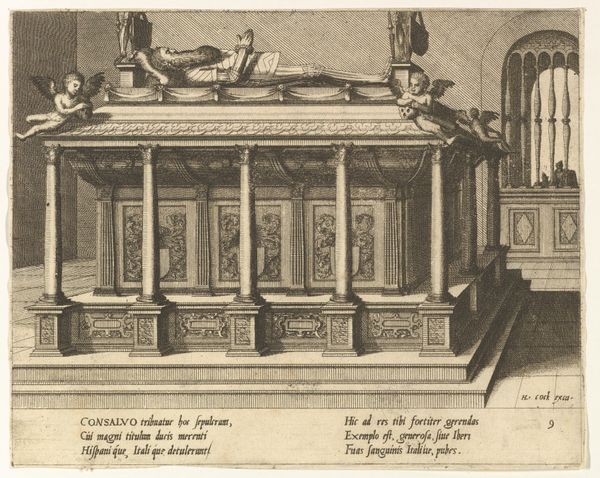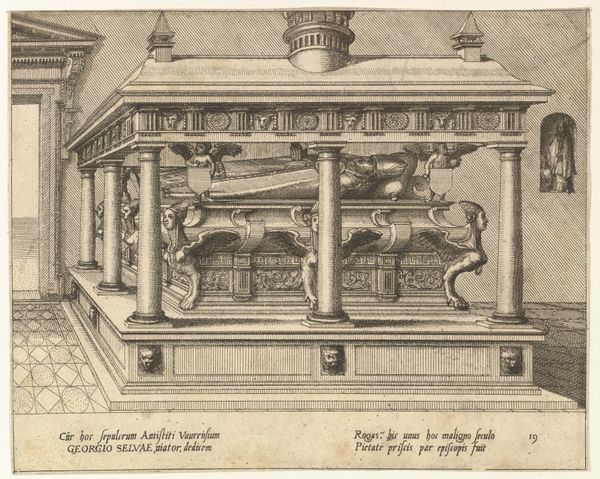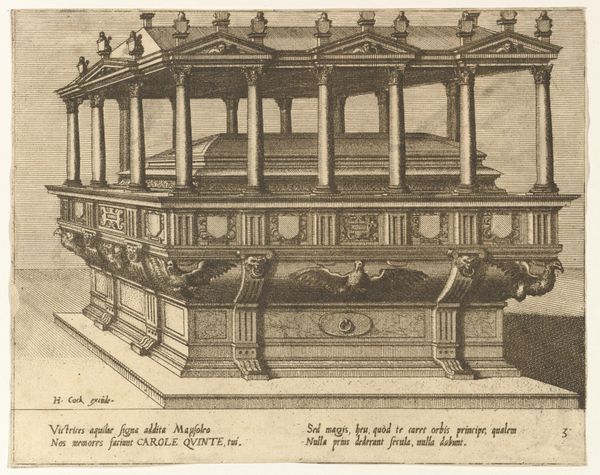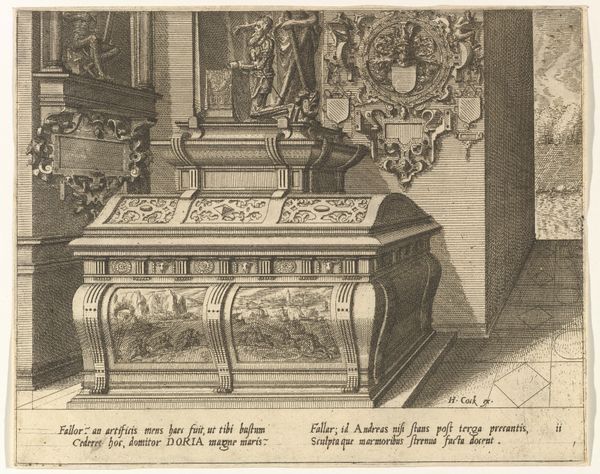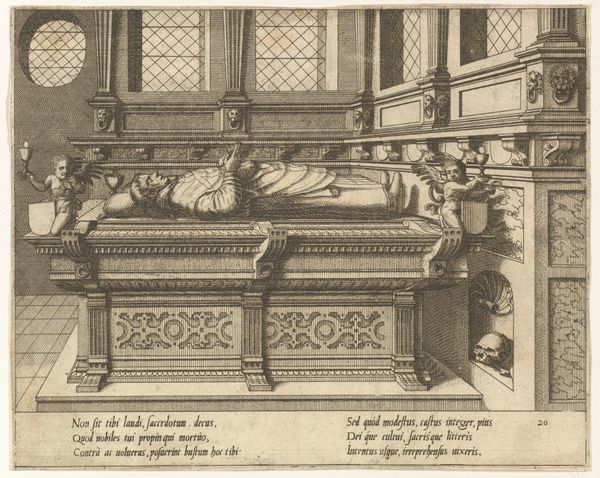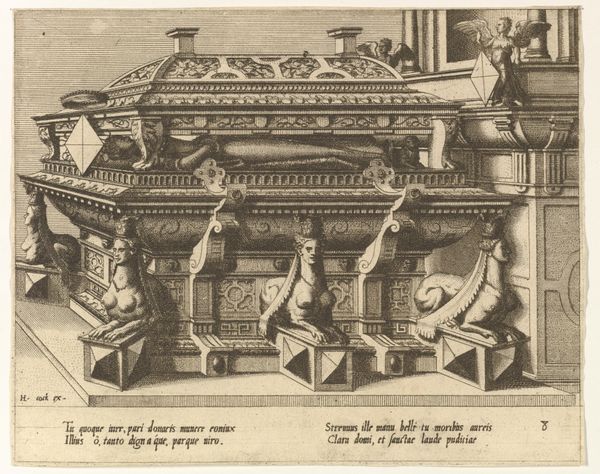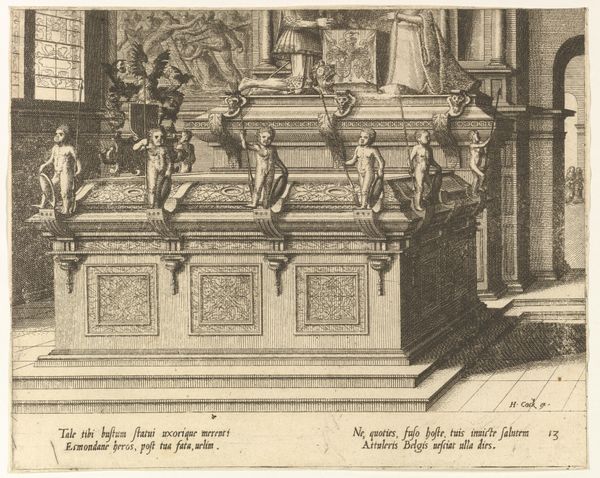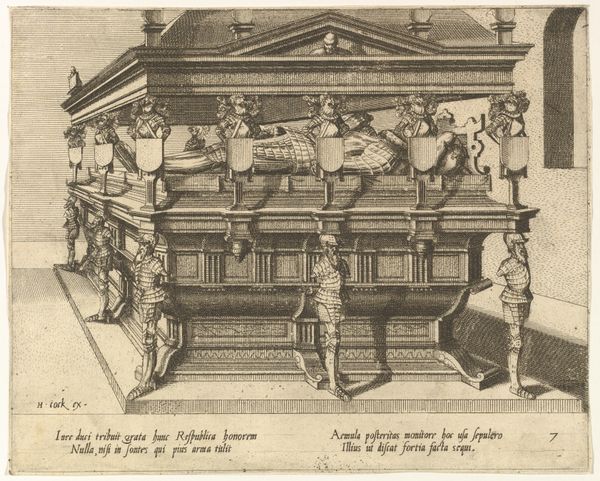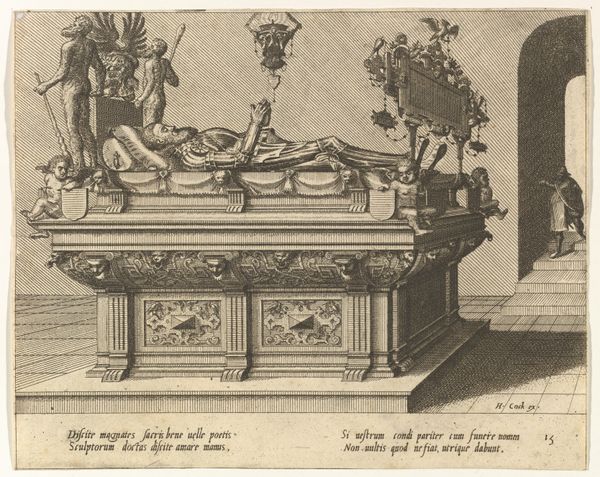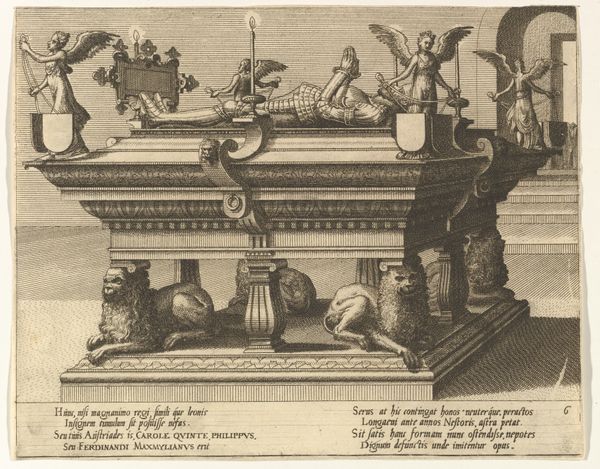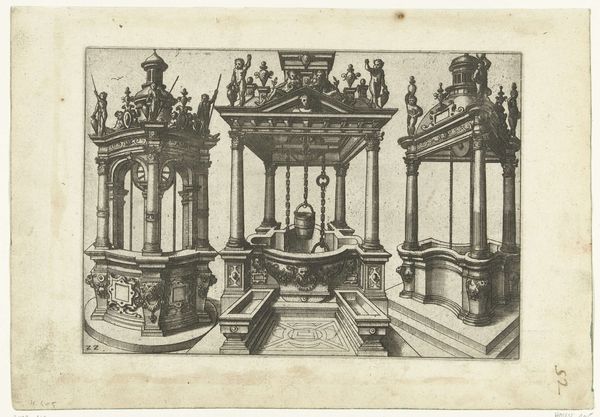
drawing, print, engraving, architecture
#
drawing
# print
#
figuration
#
11_renaissance
#
column
#
history-painting
#
engraving
#
architecture
Dimensions: sheet: 6 5/8 x 8 1/4 in. (16.8 x 21 cm)
Copyright: Public Domain
This is "Cœnotaphiorum (10)," an engraving by Hans Vredeman de Vries, made in the 16th century, and now housed at the Metropolitan Museum of Art. The print depicts a tomb, or cenotaph, rendered with a striking emphasis on architectural space and perspective. The geometric precision and symmetry create a sense of formal, almost mathematical, order. The tomb’s structure, with its classical columns and ornate entablature, invites us to consider how architectural forms communicate ideas of power, memory, and the sublime. De Vries employs linear perspective to draw the viewer's eye deep into the composition. Within a structuralist framework, the cenotaph can be seen as a sign, encoding cultural values related to death, remembrance, and social status. The use of classical motifs—columns, friezes, and symmetrical arrangement—further encodes the values of Renaissance humanism, where classical forms were revived to signal a return to an idealized past. This encoding goes beyond mere visual representation; it reflects a broader intellectual and philosophical engagement with history, memory, and the construction of meaning through formal structures. The print is not just an aesthetic exercise but a coded representation of cultural values, inviting viewers to interpret its meaning within a structured system of signs and symbols.
Comments
No comments
Be the first to comment and join the conversation on the ultimate creative platform.
